READY TO GET STARTED?
REQUEST A FREE ESTIMATE
Fill out the form below or call (888) 466-7849 for a free, no-obligation estimate.
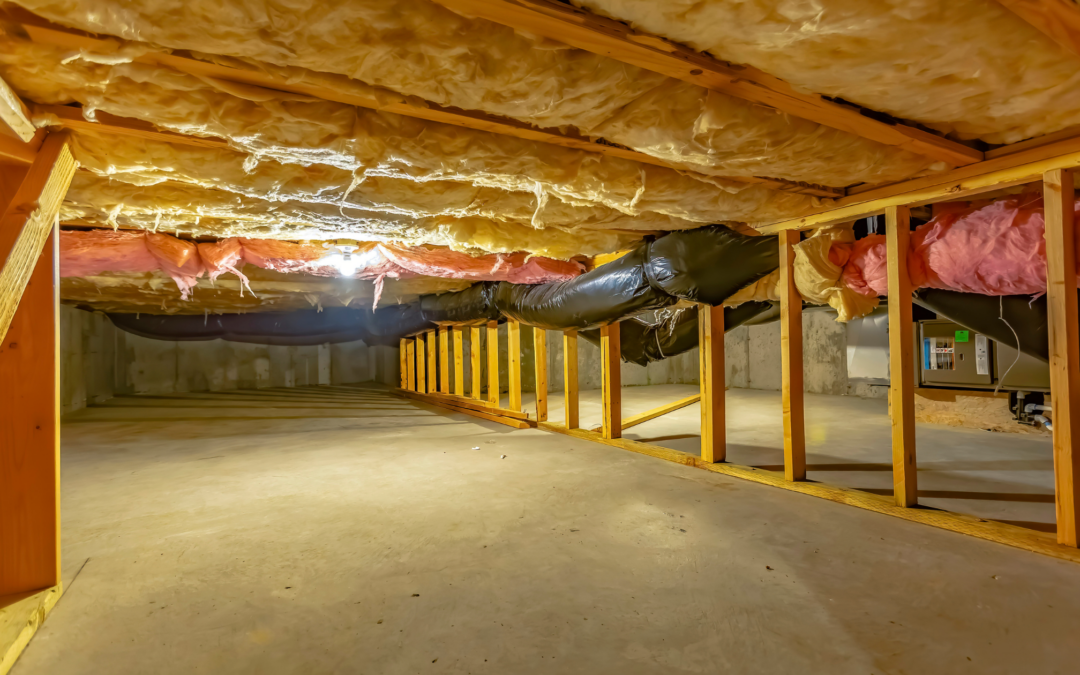
Crawl spaces are often neglected areas in homes, yet they play a crucial role in maintaining your property’s structural integrity and indoor air quality. If your home has a crawl space, you may have heard about crawl space encapsulation as a solution for various problems, such as moisture, mold, and pests. But when is the right time to encapsulate your crawl space? This blog will cover what crawl space encapsulation is, the differences between encapsulation, enclosure, vapor barriers, and moisture barriers, and why encapsulating your crawl space could be a beneficial investment for your home in Georgia.
Crawl space encapsulation involves sealing your crawl space to protect it from moisture, pests, and temperature fluctuations. This process usually includes:
The primary goal of crawl space encapsulation is to create a controlled environment that improves air quality, increases energy efficiency, and prevents mold and mildew from growing.
There are several key signs that indicate it may be time to encapsulate your crawl space. Below are the most common situations where crawl space encapsulation is highly recommended:
If your crawl space is frequently damp or you notice standing water after it rains, this is a clear sign of moisture problems. In Georgia, where humidity is often high, excessive moisture can easily find its way into your crawl space. When moisture builds up, it can lead to mold growth, wood rot, and structural damage. Encapsulation prevents standing water from accumulating and significantly reduces moisture levels, helping to protect your home’s foundation.
Mold and mildew thrive in damp environments. If you’ve discovered mold in your crawl space or in other areas of your home, encapsulating your crawl space can be a key step in stopping its spread. Mold not only damages the structural elements of your home but also poses serious health risks, especially for individuals with allergies or respiratory conditions. Crawl space encapsulation prevents mold growth by controlling moisture levels and eliminating the conditions mold needs to thrive.
Because air circulates from your crawl space into your home, poor conditions in the crawl space can directly affect the air quality inside your house. If you notice musty odors or experience increased allergies, asthma, or respiratory issues, it may be time to consider professional crawl space encapsulation. By sealing your crawl space, you can significantly improve the air quality inside your home.
A damp, uninsulated crawl space can lead to significant energy inefficiency. If your heating and cooling costs have been steadily rising, it could be due to poor insulation and uncontrolled air exchange between your crawl space and living areas. Encapsulating your crawl space can drastically improve your home’s energy efficiency, allowing your HVAC system to operate more efficiently and reducing your energy bills.
Crawl spaces are a haven for pests such as rodents, insects, and termites. If you’ve noticed increased pest activity in your home, there’s a good chance they’re entering through your crawl space. Encapsulation seals off entry points, preventing pests from getting into your crawl space and, ultimately, your home. By encapsulating your crawl space, you not only improve your home’s structural health but also make it less inviting to pests.
When it comes to crawl space protection, several terms are often used interchangeably, but they aren’t exactly the same. Let’s clarify the differences:
Crawl space encapsulation is the most comprehensive solution. It involves sealing the entire crawl space, including the floor, walls, and vents, with a vapor barrier and may include installing a dehumidifier. The goal is to create an airtight space that is protected from moisture, pests, and temperature extremes.
Enclosure refers to sealing the crawl space but not to the same extent as encapsulation. While vents and doors may be sealed, the floor and walls may not be fully covered with a vapor barrier. This method may offer some benefits but lacks the thorough protection of full encapsulation.
A vapor barrier is a thick plastic sheeting laid across the crawl space floor to prevent ground moisture from evaporating into the air. While a vapor barrier is a key component of encapsulation, it alone does not offer the full protection that encapsulation provides. Vapor barriers are useful in controlling moisture, but they do not address issues such as air leakage, pest entry, or temperature control.
A moisture barrier is similar to a vapor barrier but is typically less comprehensive. Moisture barriers can prevent some moisture from entering your crawl space but may not fully protect against high humidity or heavy moisture accumulation. Moisture barriers are less effective than full encapsulation in controlling air quality and preventing mold and mildew growth.
Encapsulating your crawl space provides numerous advantages that make it a wise investment for homeowners in Georgia. Here are some of the top benefits:
Encapsulation prevents moisture, mold, mildew, and pests from entering your crawl space, which in turn improves the air quality inside your home. With cleaner, drier air circulating through your living spaces, you’ll notice a reduction in musty odors and allergens, contributing to a healthier indoor environment.
Encapsulating your crawl space can lead to significant energy savings. By sealing the space and adding insulation, your home’s HVAC system doesn’t have to work as hard to maintain a consistent temperature. This translates to lower heating and cooling costs, improved energy efficiency, and a more comfortable home.
Since encapsulation dramatically reduces moisture levels, it effectively prevents the growth of mold and mildew. Mold and mildew not only damage your home’s structure but also pose serious health risks. By keeping your crawl space dry and protected, encapsulation helps to maintain a healthy, mold-free environment.
Moisture in your crawl space can affect your HVAC system, leading to rust and decreased efficiency. By keeping the area dry and free from humidity, crawl space encapsulation helps extend the lifespan of your HVAC system, ensuring it runs efficiently for longer.
Pests such as rodents, termites, and insects often enter homes through unsealed crawl spaces. Encapsulation seals off entry points, making your home less attractive to pests. This, combined with the moisture control benefits, greatly reduces the likelihood of a pest infestation.
A well-maintained and encapsulated crawl space can increase the value of your home. Prospective buyers are more likely to be interested in a home that is energy-efficient, moisture-controlled, and free from pest problems.
While some homeowners may be tempted to encapsulate their crawl space on their own, it’s often best to hire a professional for this complex job. Professional crawl space encapsulation services ensure that all aspects of the project are handled correctly, from installing a high-quality vapor barrier to sealing every entry point. Hiring a professional also ensures that your crawl space remains dry, pest-free, and energy-efficient for years to come.
Crawl space encapsulation is an excellent solution for homes in Georgia dealing with moisture, mold, pests, or energy inefficiency. Whether you’re looking to improve your home’s air quality, reduce heating and cooling costs, or protect your property from standing water, encapsulation can provide long-lasting benefits. If you notice any of the warning signs discussed above, it may be time to contact a pest control company that offers professional crawl space encapsulation services to keep your home safe, dry, and energy-efficient.
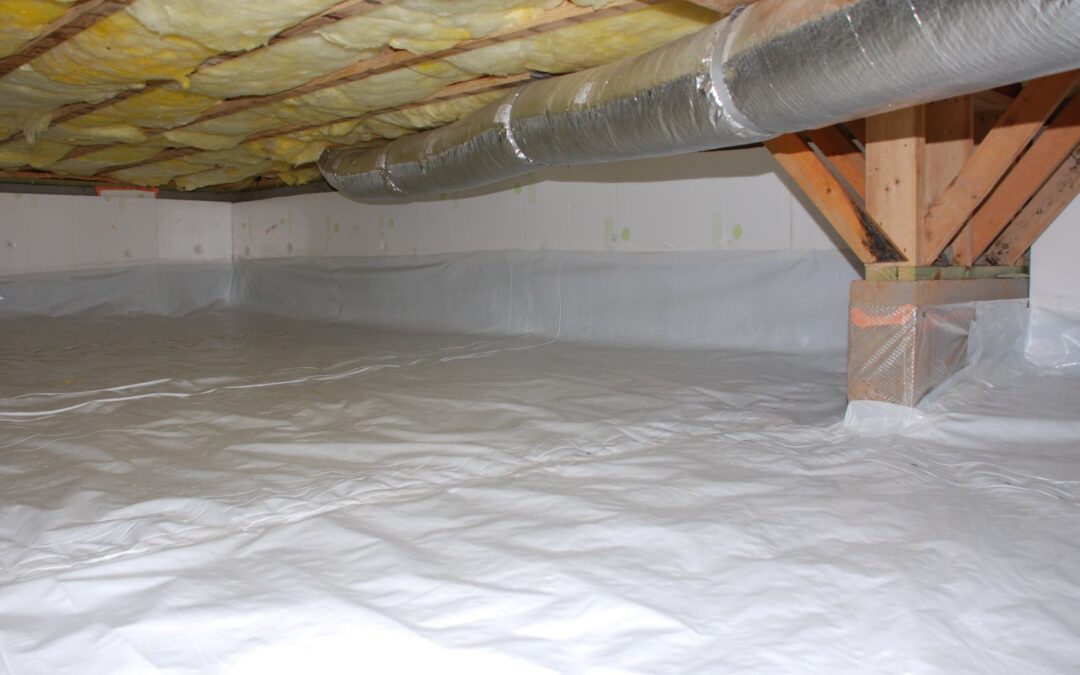
Your Tennessee home’s crawlspace plays a significant role in the health and safety of your family and overall property. If crawlspaces are not properly taken care of, it can lead to pest infestations, foundation damage, poor indoor air quality, and potential health hazards! Luckily, crawlspace encapsulation looks to address these concerns. We break down all you should know about crawlspace encapsulation and how to maintain a healthy crawlspace!
Encapsulation is the process of sealing your crawlspace with a barrier to prevent moisture from entering. A crawlspace professional will install this moisture or vapor barrier on the floor and walls of the crawlspace, allowing moisture to stay out to prevent fungi growth and other moisture-related problems.
Along with preventing fungi growth and excessive moisture, there are several benefits to enclosing your crawlspace! Moisture can affect several factors inside your home, Including:
Enclosing your crawlspace is a great way to avoid moisture, but the care for your crawlspace doesn’t stop there! It’s important to continue taking care of the space even after it’s enclosed. Regularly check for signs of moisture such as dampness or standing water. If you notice moisture buildup, address it as soon as possible. Additionally, consider installing screens over vents or openings in your crawlspace to prevent pests from entering. Remove any debris or clutter you might see, as pests use it to hide. Lastly, schedule regular inspections with your Nashville pest control company to ensure the area is free of pests and other problems.
If you think it’s time to enclose your crawlspace or would like more information on various crawlspace care solutions, call a pest control company near you for a free inspection!
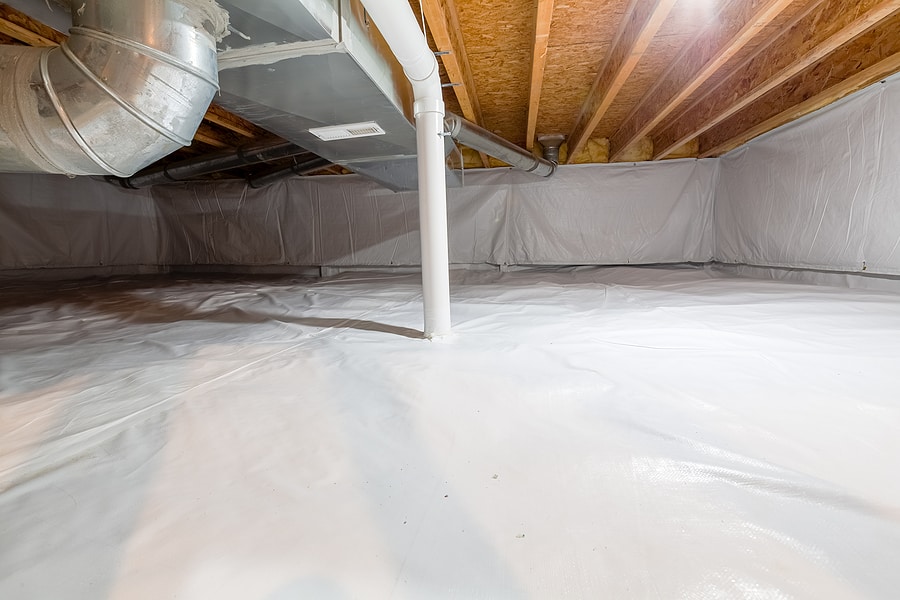
A moisture barrier is a plastic liner that covers the dirt in your crawlspace. These barriers are used to block vapors and moisture in the soil from entering your crawlspace. But is it necessary to install a moisture barrier under your home? While that decision remains a personal one for you as a homeowner, there are several benefits to moisture barriers.
Moisture in your crawlspace can affect the temperature inside your home. As your HVAC unit or furnace runs longer to help maintain the temperature inside, it uses more electricity which, in turn, increases your electricity bill. This also puts additional strain on the HVAC unit, causing them to wear out faster and need costly repairs and/or replacement. A moisture barrier acts as a sealant, controlling the moisture levels and easing the strain of your HVAC system, making your home more energy efficient and saving you money on your energy bills.
High moisture levels in your crawlspace provide the ideal environment for mold and mildew growth. Mold and mildew in your air system can be detrimental to your and your family’s health. Mold can also cause significant damage to your home. Installing a moisture barrier greatly reduces these moisture levels, preventing mold and mildew from forming. Mold and mildew are often the cause of foul odors in your home, as well. A moisture barrier can also help eliminate these stale, musty odors from your home.
Moisture that gets into your crawlspace affects the temperature in your home. It can make your home too hot, too cold, too stuffy, or too dry depending on the weather, the season, and other factors. The moisture either absorbs the warmth from your house or keeps it from escaping. In turn, this causes your HVAC unit or furnace to run too long trying to maintain a steady temperature indoors. Installing a moisture barrier seals those spaces and keeps the moisture out of your crawlspace, helping to regulate the temperature inside.
Your home’s foundation is vital to its structure and soundness. Moisture in your crawlspace can lead to wood rot, especially on joists and beams. Rotting wood can lead to significant structural damage to your home which can, in turn, stick you with a huge repair bill. Moisture barrier installation reduces the amount of moisture in your crawlspace which helps prevent wood rot, protecting the structural integrity of your home.
Your unsealed crawlspace is an open invitation to pests and wildlife in search of shelter, food, and water. Once inside, these critters can cause significant damage to your home and your health. Rodents and other wildlife can chew through wood and electrical wires. Roaches and other insects can use the crawlspace to gain access to your home, posing potential health risks to you and your family. Installing a moisture barrier completely closes off your crawlspace, eliminating this entry point for pests into your home.
How do you know if you have a problem within your crawlspace? Some signs of crawlspace trouble include:
If you are interested in moisture barriers or crawlspace enclosure, contact a reputable company for more information.
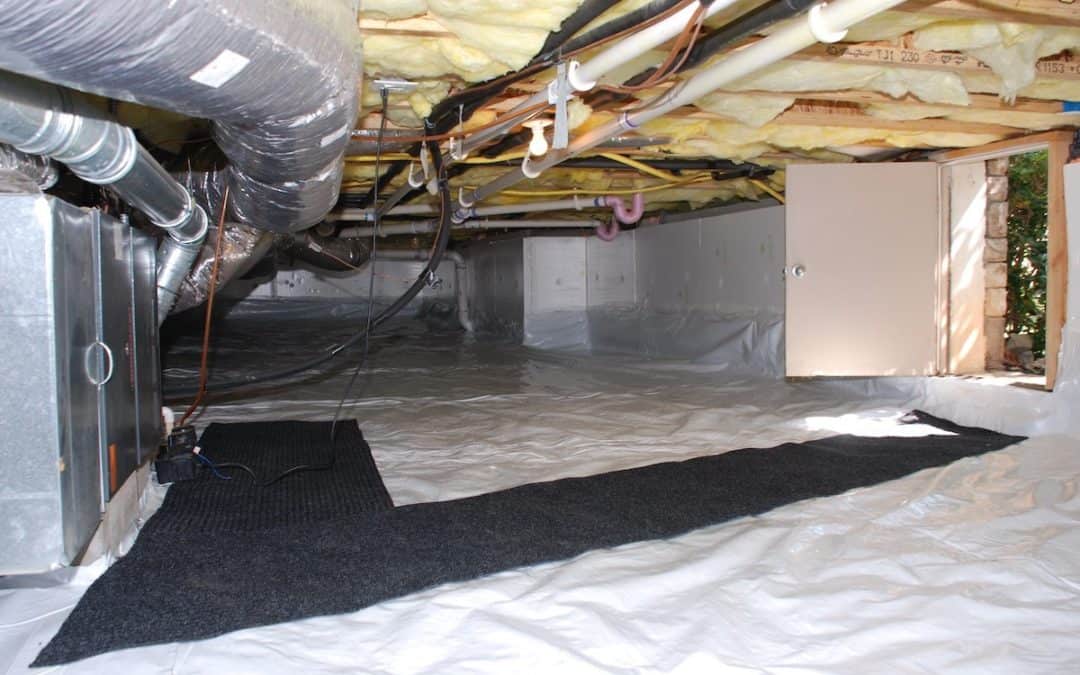
Dealing with cold winter weather outside is bad enough; when the cold temperatures start creeping into your home it’s even worse. Heating systems work hard enough in the winter time to keep our homes warm and comfortable. Additional cold air seeping into your house leaves us with cold feet and higher energy bills.
Up to 50% of household air flows in from your crawlspace. An unenclosed crawlspace lets your heated or cooled air out and lets outdoor air in. This causes your heating and cooling systems to work overtime to compensate for this fluctuation in temperatures, causing you to still feel cold floors and inconsistent temps throughout the house. These units burn more energy leading to increased utility bills. This also puts more strain on the system leading to repairs and replacements sooner and more often.
Crawlspace enclosure is similar to adding a liner to your pool to avoid leaks. Water vapor enters your crawlspace from the ground and can even seep through cement. Increased moisture can cause a host of problems in your crawlspace and your home. Moisture attracts pests; degrades indoor air quality; provides the ideal condition for mold and mildew growth which leads to rot, warped floors, and structural damage. Adding a moisture barrier and dehumidifier is a great way to help keep the moisture out of your crawlspace.
Some common reasons people enclose their crawlspace include:
There are two main disadvantages to crawlspace enclosure. The first is the initial cost of installation. While there is a somewhat pricey initial fee for installation, the savings in energy bills and pest control costs over the long term offset these costs. The second disadvantage is improper installation. Whether doing it yourself or using a professional, improper installation or faulty materials do occur. The most common signs of improper installation include:
Once you have your crawlspace enclosed, it is important to continually inspect it to make sure tears or other damage have occurred. It is recommended that the crawlspace be inspected at least once per year but preferably twice per year. Many homeowners time their crawlspace enclosure inspection to coincide with their annual termite inspection. It is important to check the crawlspace for moisture levels (there should be no humidity, condensation, or standing water); signs of mold or rot (including loose joists, damage to support beams and air ducts, or visible mold present); and signs of rodents or pest activity (including droppings and chew marks).
While crawlspace enclosure can be a DIY project, it is recommended that installation be done by a professional. This not only helps ensure quality materials and appropriate techniques are used but also guarantees repairs and replacement in the event there are issues. Contact your local pest control company for a crawlspace enclosure quote.
Is That A Rat or A Mouse and Why It Matters
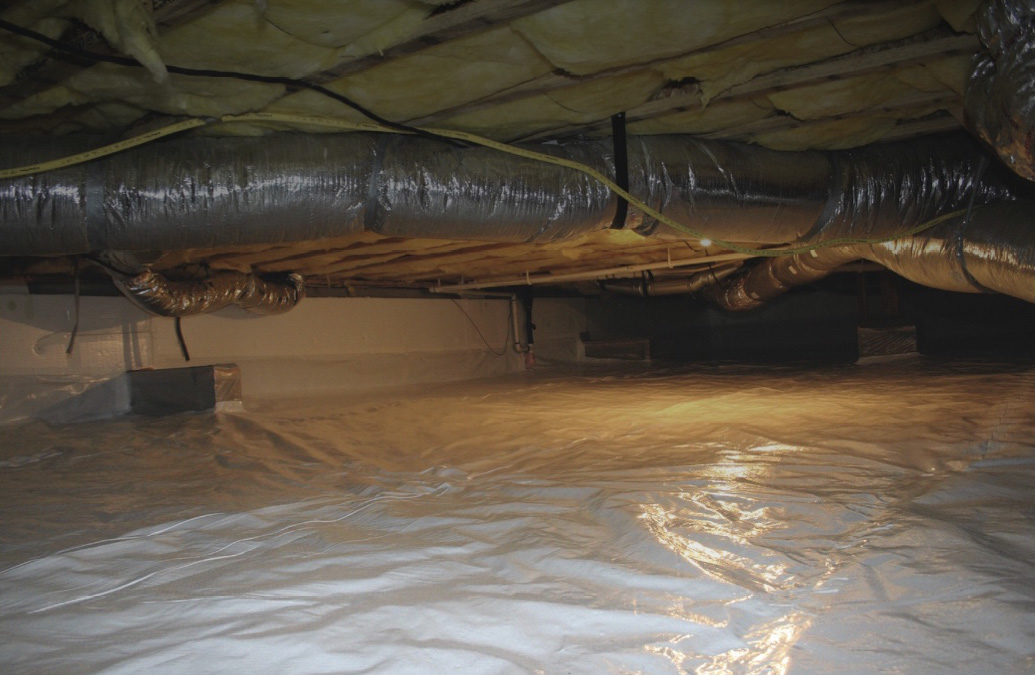
There are over 27 million homes in the United States with crawlspaces. These crawlspaces are typically used for storage and easy access to plumbing but can also harbor water and mold. They are dirty, damp places that provide an ideal environment for mold, mildew, pests, and rust. Keeping your crawlspace dry is essential to improving the overall health of your home. Here are the essentials to crawlspace moisture barriers.
A crawlspace is a variation of a basement where you can crawl around. The surface of a crawlspace is often just bare earth. They are traditionally built for homes without a basement or for homes that aren’t built on a slab. The primary purpose of crawlspaces was to promote air circulation throughout the home and to allow easy access to plumbing, electrical, and other home maintenance needs. The crawlspace can also be used for extra storage.
Crawlspace moisture usually comes from one of three sources:
Controlling the moisture levels in your crawlspace provides you with several benefits, helping to improve both your health and the health of your home. The benefits include:
Crawlspace moisture should be kept at an appropriate level to help prevent adverse effects on your home and your health. The Environmental Protection Agency (EPA) recommends keeping the relative humidity in your home between 30% and 50%.
A crawlspace vapor barrier is a set of polyethylene sheets that are placed on the uncovered soil of your crawlspace to prevent moisture from seeping through. This helps improve the relative humidity levels in the crawlspace. Vapor barriers, also known as moisture barriers, are often used in conjunction with dehumidifiers and/or crawlspace encapsulation.
Do you still have questions about crawlspace moisture barriers? Do you have an issue with moisture in your crawlspace? Contact a professional who can come out and inspect your crawlspace, identify potential areas of concern, and recommend the best treatment plan for your situation.